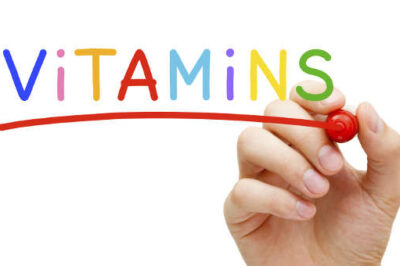Vitamin deficiencies create an imbalance within the body. Eating large amounts of processed foods is one role player in these deficiencies. Oftentimes, many do not consume enough of the proper foods to provide the body with what it needs.
Impairments, or challenges functioning properly, are often the result of vitamin deficiency. Over time, it is possible for certain diseases to develop within the body if changes are not made. Understanding the signs of vitamin deficiency becomes important when working to maintain excellent health.
Six Strange Signs You Don’t Want to Miss
1. Cracks in the corners of your mouth. Type of vitamin deficiency: Cracks in the corners of your mouth along with redness can be a sign of a deficiency in the B vitamins and zinc. Iron deficiency is also a possibility. Individuals who diet to lose weight can lack these vitamins more, especially those who are following a vegetarian diet.
Add these foods: In order to overcome the deficiency and place the body back into balance, add proteins back into the diet. For vegetarians, this will be “plant” proteins. For other individuals, this can include foods such as tuna, salmon, lentils, eggs, and poultry.
Enhancing absorption: The body absorbs iron more readily when the individual adds vitamin C. When eating a meal rich in iron, add foods which are full of vitamin C such as broccoli, kale, oranges, guavas, peas, or papaya.
2. Muscle cramps and ongoing pain in the lower extremities. Type of vitamin deficiency: Muscle cramps in the feet and legs are often a sign of a vitamin deficiency. The body lacking in sufficient amounts of potassium, magnesium, and calcium can display such signs. Individuals who work outdoors in warmer weather are more susceptible to this type of deficiency.
Add these foods: Adding foods which are rich in these vitamins will often help keep muscle cramps away. They will also help the body to function in the way it was created to function. Foods which help to add these three vitamins include bananas, almonds, grapefruit, squash, apples, spinach, and kale.
Quick Tip: Athletes typically suffer from muscle cramps due to heavy perspiration. Competitors will often drink pickle juice before they exercise on a regular basis. Drinking a few ounces of the juice can relieve cramps within two minutes.
3. Feelings of numbness and tingling. Type of vitamin deficiency: When the body exhibits feelings of numbness and tingling, this can be another sign of deficiency in the B vitamins. Additional signs of this deficiency also include bouts of depression, continued fatigue, and hormone imbalances.
Add these foods: Adding organic proteins is a great way to prevent deficiencies of B vitamins. Pinto and black beans are one option along with adding eggs, asparagus, and clams. Adding a healthy multivitamin is also a great preventative.
4. White bumps, red bumps. Type of vitamin deficiency: White bumps, or red bumps, are often a sign of a vitamin D deficiency. It can also be a sign of the body lacking in vitamin A or important fatty acids.
Add these foods: Adding a variety of healthy nuts to the diet is essential along with including a variety of dark leafy veggies. The bright colored vegetables are also a great addition to the diet.
Recommendation: Vitamin D supplements are commonly used and should be of a high-quality brand. The recommended dosage is usually 2000 IU daily.
5. Hair loss and red rash on cheeks. Type of vitamin deficiency: Hair loss and signs of a rough rash on the cheeks can be a sign of a vitamin B deficiency. Biotin is not stored by the body, so it must regularly be replenished. Biotin is also known to many as the “hair” vitamin.
Add these foods: In order to give the body a good supply of biotin, add nuts, soybeans, salmon, avocados, and bananas to the diet.
Recommendation: Adding biotin to the diet through supplementation is an option. The daily recommended dosage is usually around 2.5 mg if dietary nutrition is lacking.
6. Fingernails with Beau’s lines. Type of vitamin deficiency: Depression lines on the fingernails are often a sign of malnutrition, especially those which run “horizontally.” The lines can be a result of B vitamin deficiencies, calcium deficiencies, or zinc deficiencies. Also, a lack of vitamin C may contribute to Beau’s lines.
Add these foods: Eating a diet with sufficient protein is important along with a good supply of healthy vitamins with minerals. Adding organic whole grains to the diet can be helpful along with a variety of fruits/veggies.
Quick Tip: Adding a high-quality supplement is important in helping the body to stay balanced and function properly. With adequate changes in the diet, signs of deficiency should go away. If there are further concerns, please see your family physician.
Don Colbert, M.D., has been board-certified in Family Practice for over 25 years and practices Anti-Aging and Integrative medicine. He is a New York Times best-selling author of books such as The Bible Cure Series, What Would Jesus Eat, Deadly Emotions, What You Don’t Know May Be Killing You, and many more with over 10 million books sold. He is the Medical Director of the Divine Health Wellness Center in Orlando, Florida, where he has treated over 50,000 patients.
For the original article, visit drcolbert.com.








Leave a Comment
You must be logged in to post a comment.